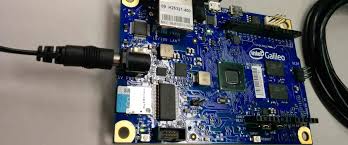Introduction

In the rapidly expanding world of the Internet of Things (IoT), sensor PCBs represent the true intelligence layer of connected systems. An IoT Sensor PCB is more than a carrier board—it is a highly integrated electro-mechanical platform responsible for sensing, data acquisition, preprocessing, wireless communication, power regulation, and environmental resilience. As IoT deployments scale across smart industries, medical devices, autonomous systems, and environmental monitoring, the engineering demands for sensor PCBs continue to accelerate.
KKPCB specializes in high-reliability IoT sensor PCB fabrication, optimized for ultra-low-power operation, high-density integration, RF communication stability, and challenging environmental conditions.
1. Technical Role of IoT Sensor PCBs
A modern IoT Sensor PCB integrates multiple functional domains into a compact architecture:
1.1 Sensor Interface Layer
This layer collects real-world analog signals using:
-
Temperature, humidity, pressure sensors
-
Accelerometers & gyroscopes
-
Gas, optical, magnetic sensors
-
MEMS-based sensors
-
High-precision ADC/DAC interface circuits
The PCB must ensure high signal fidelity, requiring controlled impedance, analog ground segmentation, and noise-optimized layout.
2. Architectural Design Considerations

2.1 Noise-Sensitive Analog Domain
IoT sensors operate with micro-volt to milli-volt signal levels.
To ensure accuracy:
-
Differential routingLow-noise operational amplifiers
-
Shielded ground islands
-
Guard rings for leakage reduction
-
Analog/digital isolation using split planes
2.2 Wireless Communication Integration

IoT PCBs require stable RF performance for protocols such as:
-
BLE, Wi-Fi, Zigbee, LoRa, NB-IoT, Sub-1GHz ISM bands
-
Custom RF protocols for industrial or long-range applications
Technical requirements include:
-
50Ω controlled impedance
-
Low-loss RF substrates (Rogers, PTFE, HY-brid laminates)
-
Antenna-in-package (AiP) or PCB-trace antenna optimization
-
Harmonic suppression and matching networks
2.3 Ultra-Low-Power Architecture
IoT sensor nodes must operate on:
-
Coin-cell batteries
-
Energy harvesting (solar, vibration, thermal, RF)
To reduce consumption:
-
MCU deep-sleep modes
-
Low quiescent LDOs
-
Dynamic power gating
-
High-efficiency DC/DC converters
-
PCB thermal simulation for minimal dissipation
2.4 Edge Computing Integration
Modern IoT PCBs include:
-
Machine-learning MCU (TinyML)
-
Neural network accelerators
-
On-board encryption chips (AES, SHA256)
-
Local data filtering to reduce cloud dependency
3. Manufacturing Challenges of IoT Sensor PCBs
3.1 High-Density Miniaturization
-
HDI PCB (microvias, laser-drilled vias, stacked vias)
-
Ultra-thin substrates (0.4–0.8 mm)
-
Embedded passive components
-
0201 / 01005 components for ultra-compact boards
3.2 Harsh Environment Adaptability
IoT sensors may operate outdoors, underground, industrial zones, or HVAC systems.
PCB requirements include:
-
ENIG or ENEPIG finish for corrosion resistance
-
Conformal coating (Acrylic, Silicone, Parylene)
-
High-temperature materials (Tg ≥ 170°C)
-
Moisture and chemical-resistant laminates
3.3 Multi-Protocol Coexistence
Multiple RF modules on a single PCB must avoid interference.
Techniques:
-
RF zoning
-
EMC shielding cans
-
Ground stitching vias
-
Notched reference planes for harmonic control
4. IoT Sensor PCB Applications
Smart Industry / IIoT
-
Predictive maintenance sensors
-
Vibration, acoustic, torque sensing
-
Asset tracking & real-time telemetry
Smart Agriculture
-
Soil pH, moisture, CO₂ sensors
-
Weather monitoring
-
Livestock IoT tracking
Smart Home Devices
-
HVAC sensors
-
Presence detection
-
Air-quality monitoring
Healthcare & Wearables
-
ECG/PPG modules
-
Fall-detection sensors
-
Continuous monitoring systems
Smart City Infrastructure
-
Traffic flow sensors
-
Environmental monitoring
-
Structural health monitoring
5. KKPCB: Expert Manufacturing for IoT Sensor PCBs
We provide full-process support: HDI & multi-layer IoT PCB fabrication
-
RF-optimized board stack-up
-
High-precision impedance control
-
IoT module PCBA manufacturing
-
Rapid prototyping + mass-production scalability
-
Professional DFM/DFT/DFR engineering
Our technical team ensures each IoT sensor PCB achieves:
-
High sensitivity
-
Low noise
-
Long battery life
-
Stable wireless communication
-
Reliability in harsh environments
Conclusion
IoT Sensor PCBs are the foundation of the intelligent world, enabling data acquisition, connectivity, and automation across countless industries. As IoT continues to scale, the demand for highly reliable, miniaturized, RF-optimized sensor PCBs will continue to grow.
KKPCB provides world-class engineering and manufacturing capabilities to accelerate your IoT deployment—from concept to mass production.

